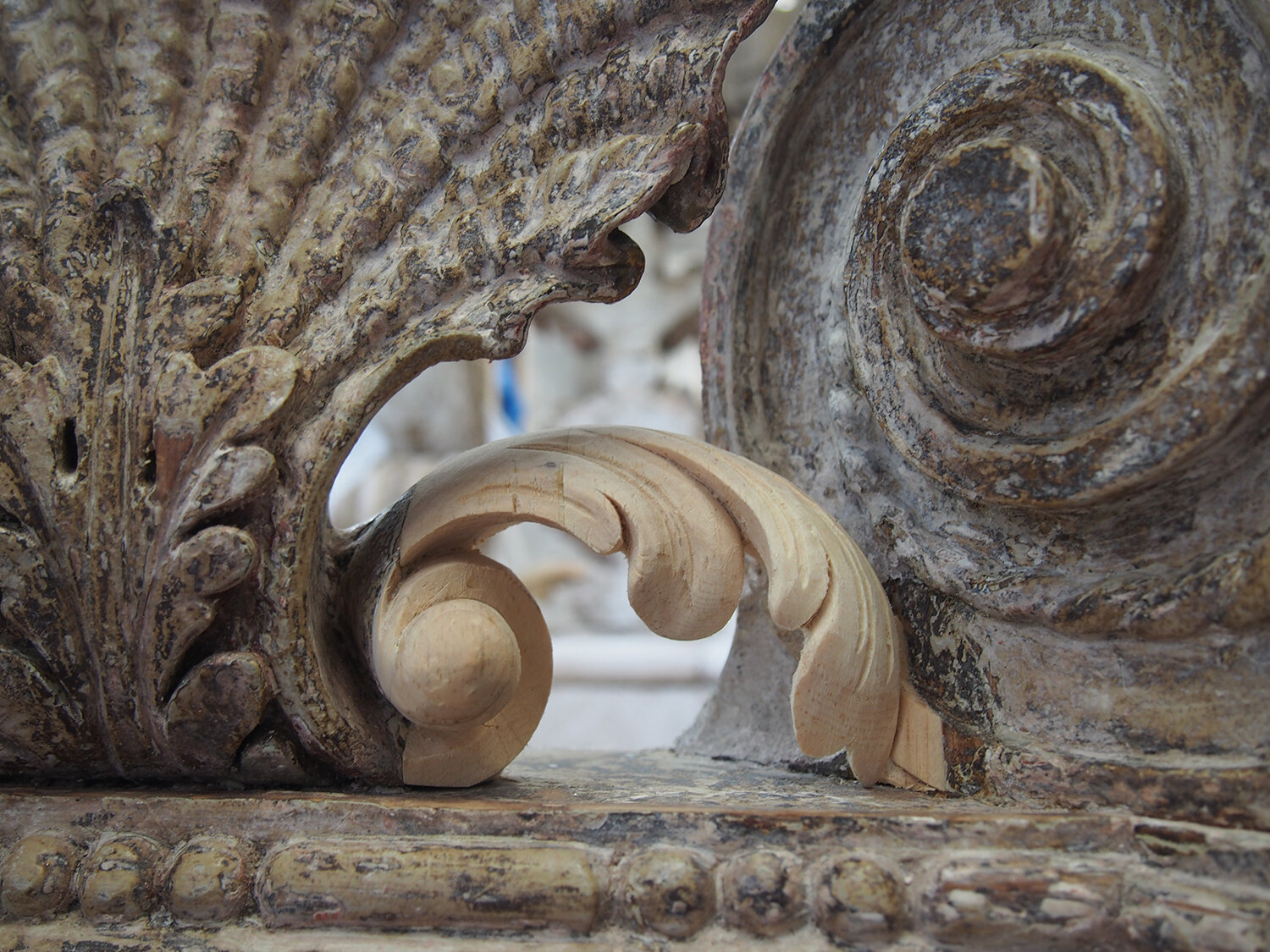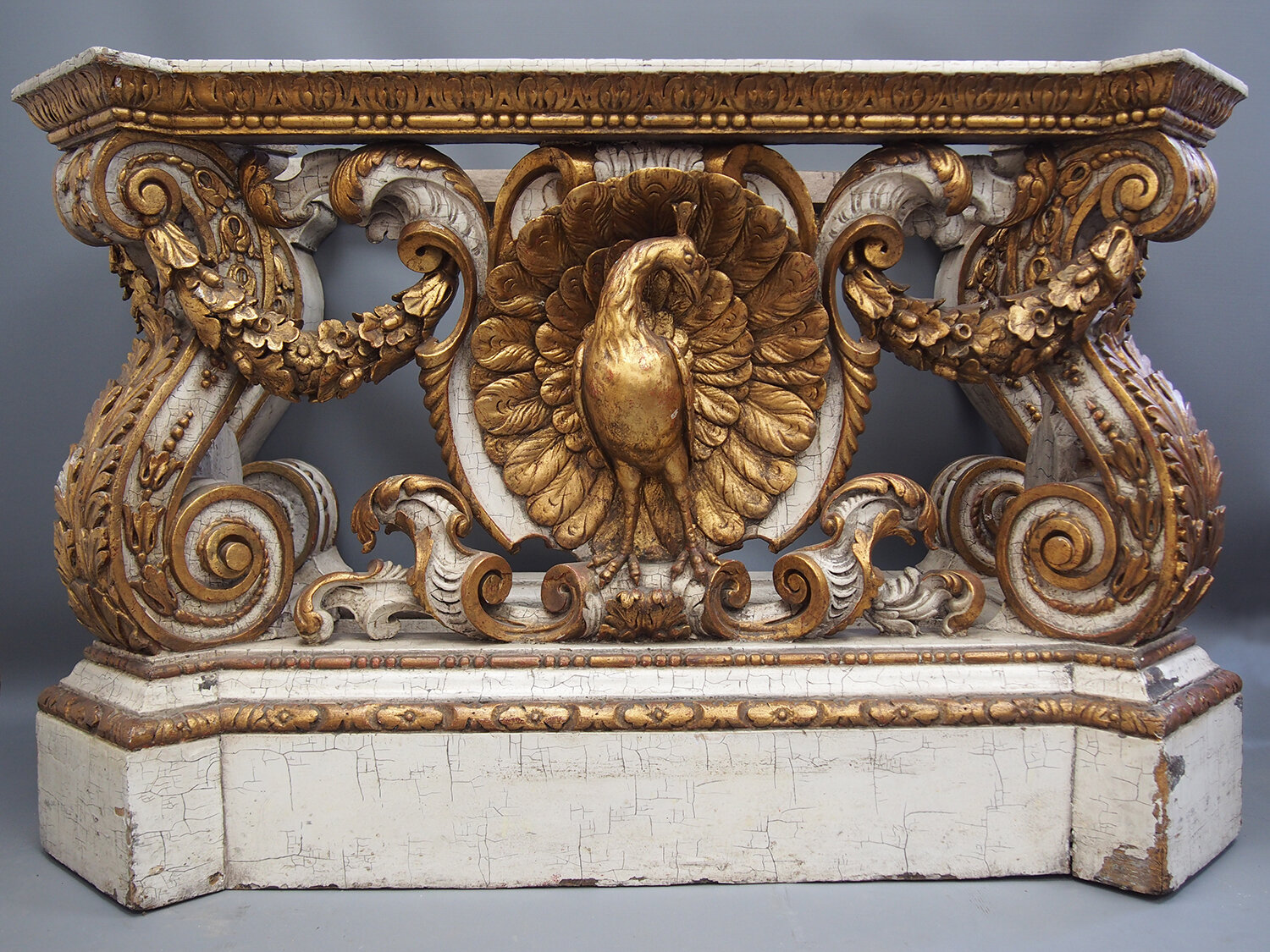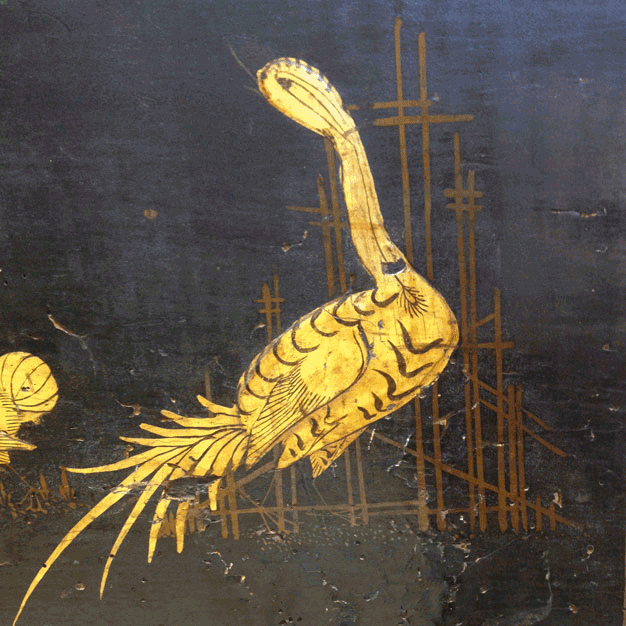conservation of furniture
All aspects of conservation and restoration are covered in the furniture studio, from 13th-century clamp coffers to 1950s Eames plywood chairs. Underpinning our work is a strong foundation in traditional cabinet making, knowledge of materials and historic construction, and a rigorous application of modern conservation techniques.
After treatment: ivory table cabinet Private Client
We work on restoring structure and preserving or reviving period finishes. Losses to wood veneer, ivory or mother-of-pearl inlay can be replaced and coloured to match the original. Lost elements such as glazing, mirrors, keys and metal mounts can be re-made and fitted.
Nineteenth-century tilt top table, before and after treatment. Private Client
There may be different goals to treatment: the piece of furniture could be a museum piece that needs to be stabilised for display, or it could be something in use in a historic house or private residence. It could be removing scratches or ring marks from a varnished surface, or a complete rebuilding of the structure. There are different approaches we can take and different degrees of restoration that can be carried out according to the context of the item and the budget for the project.
After treatment: Vietnamese mother-of-pearl table. Private client.
After treatment: Late 17th-century olive wood oyster veneer chest of drawers. Private client.
case studies
marble hill house (english heritage)
William Kent Table
This pier table was designed by William Kent as one of four matching tables for Marble Hill House, London, in ca. 1713. The other three are lost, but this one (assumed to be sold in a 19th century sale along with much of the other furniture of the house) was discovered in 1980s in Australia and brought back to the UK.
Known as the peacock table, it had a thick layer of inappropriate modern white and gold paint and we carried out microscopic analysis of the underlying paint layers to determine how to restore it. In consultation with the curators, we arrived at this period-appropriate stone white colour in keeping with the rest of the current decoration of the room. We were also able to add context to the curatorial interpretation of the table by technical observation of its features.
We developed a new conservation paint technique so that the new paint layer would be removable. We mixed pigment with a light-stable binder to make our own paint. One other matching table was carved by W Thomas Restoration, who also carved missing pieces for the table treated here, before we painted both in the new paint.
After treatment
erddig (national trust)
Japanned bureau cabinet
This bureau-cabinet from the National Trust’s Erddig, Wrexham had a major treatment. The work included cleaning, consolidating the flaking surface of the japanning, restoring losses of damaged wooden elements, and re-integrating the degraded varnish surface. The treatment resulted in re-saturation of the surface, restoring a level of gloss and clarity to the decoration.
One of the lock plates was entirely missing, so we cut an engraved a new one to match. We also had to do significant replacement of structural losses, such as this section of moulding below. Using traditional hollow and round moulding planes we could recreate the exact profile of the missing element.
private client
Syrian inlaid games table
This table had a number of losses to the mosaic-work or Khatam (in Persian) decoration. These had to be restored: the decoration is made from strips of material that are glued into a packet which is then cut into discs, like an elaborate Battenberg cake. New mother-of-pearl pieces were cut and fitted and the surface finish was cleaned and re-saturated with a light-stable conservation varnish.


























